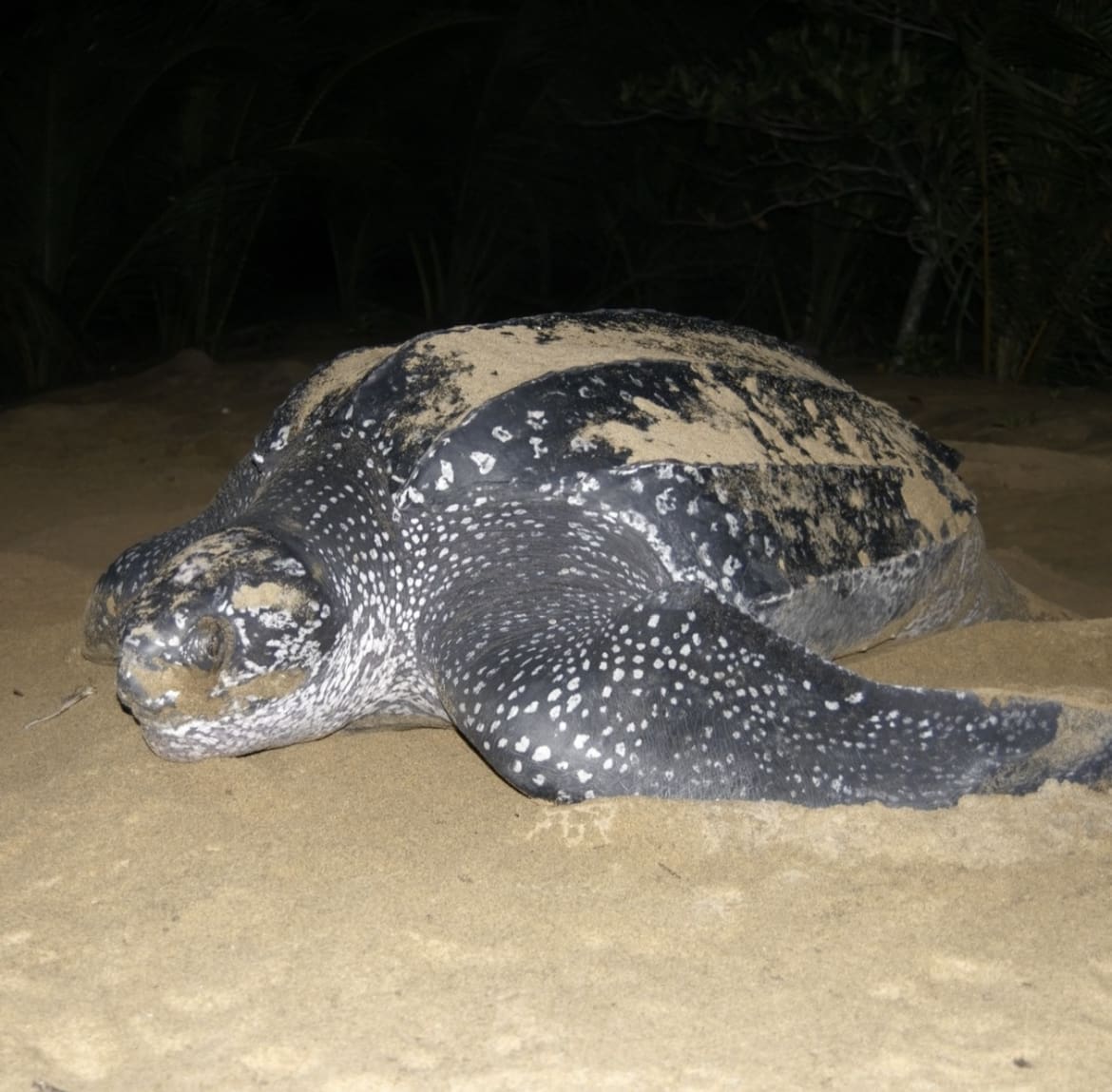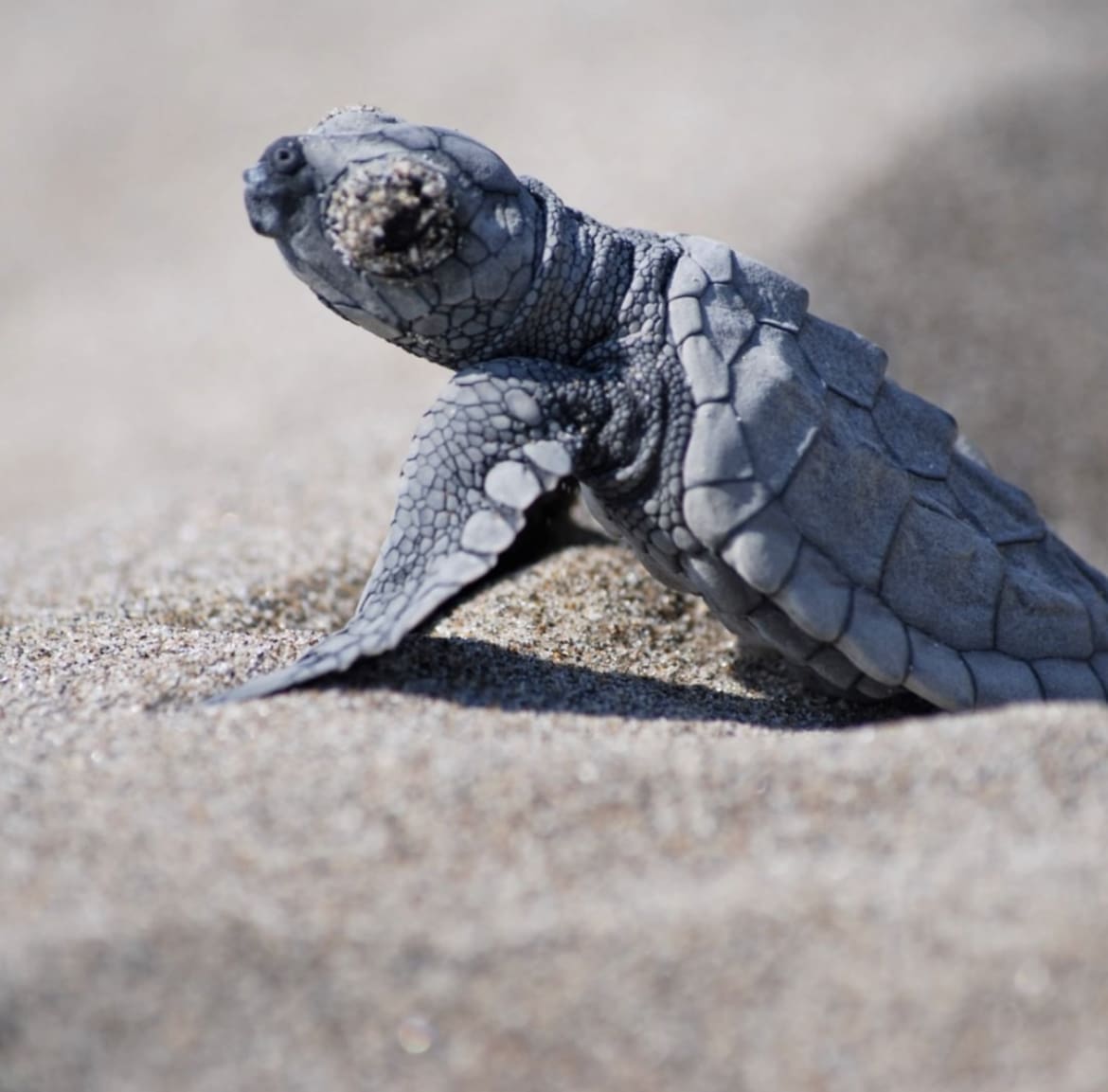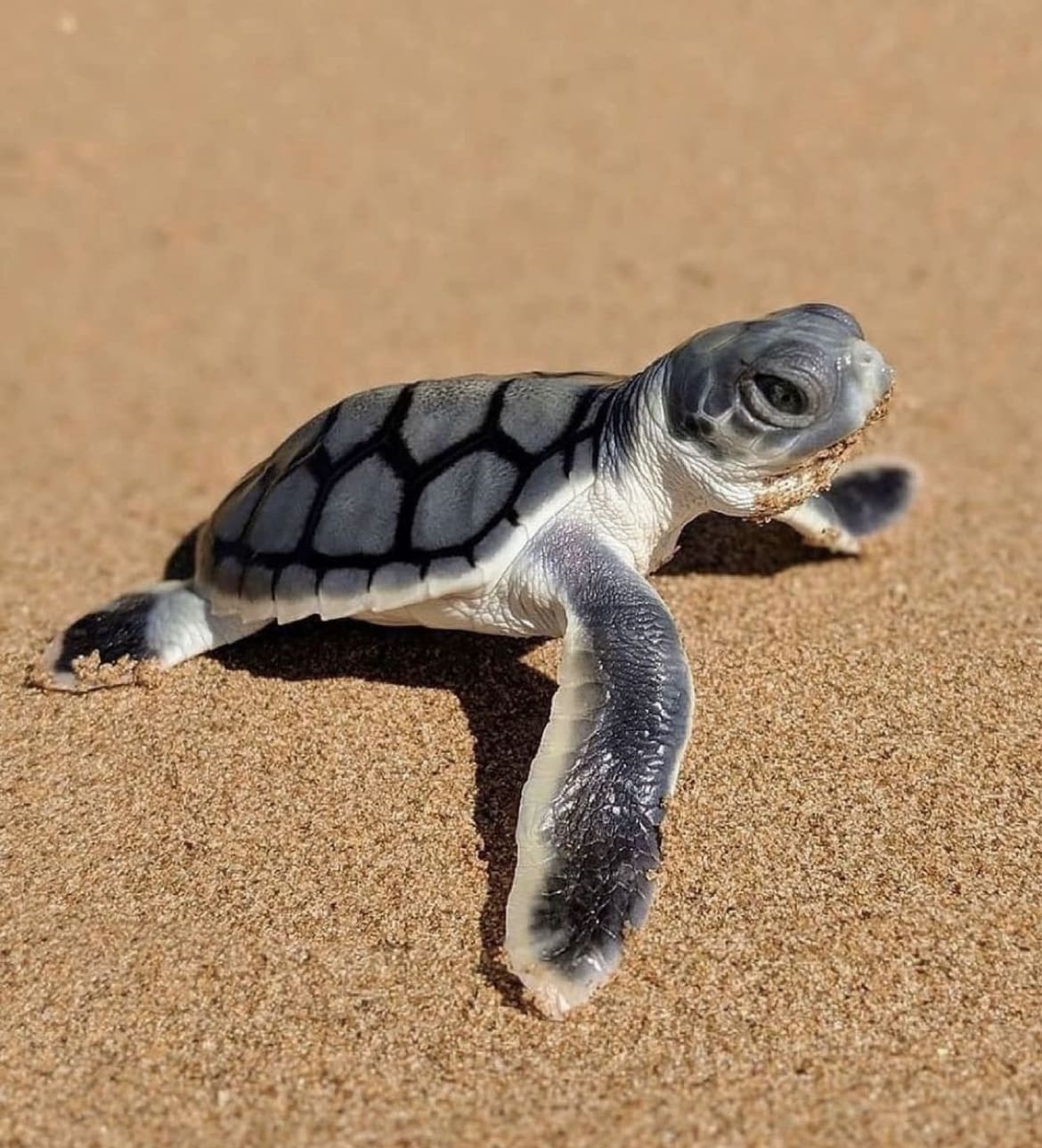[social_warfare]
Dive Deep: Unravelling the Mysteries of the Seven Sea Turtles
Imagine cruising through the ocean’s depths, encountering some of the oldest travelers of the sea—sea turtles. Each type brings its own unique vibe to the marine tapestry. Why should you care? Beyond their majestic presence, sea turtles play key roles in marine ecosystems, and they’re pretty cool to boot.
Whether you’re a scuba enthusiast, a wildlife advocate, or just love learning something new, there’s something fascinating about each species of sea turtle.
Let’s dive in and get to know these incredible creatures a bit better.
Green Turtle (Chelonia mydas) – The Veggie Lovers of the Sea
If sea turtles had a vegetarian poster child, it’d be the Green Turtle. Unlike most of their omnivorous cousins, adult green turtles mostly munch on seagrass and algae, which helps maintain the health of the seagrass beds and coral reefs. This not only keeps the underwater ecosystem in check but also ensures that other marine life has healthy habitats in which to thrive.
These turtles are easily recognizable by their large, smooth carapace which can shimmer with various shades of, you guessed it, green. This coloring isn’t just for show—it’s a quirky trait that comes from their veggie-heavy diet rich in chlorophyll.
Green turtles are true globetrotters. Found in tropical and subtropical waters around the world, these creatures love the sun and the sea. From the cozy beaches of Costa Rica to the Great Barrier Reef in Australia, green turtles don’t shy away from the world’s most beautiful and warm waters. They’re known to make impressive migrations between their feeding sites and the nesting beaches where they were born.
During nesting season, female green turtles pull off the ultimate beach landing. They haul themselves onto the sands at night, dig a pit with their flippers, and lay scores of eggs. These marathon nesting efforts are nothing short of Olympic feats.
Green turtles can hold their breath for hours when resting. Despite their heavy shells and cumbersome appearance on land, they are surprisingly swift and graceful swimmers. These turtles spend most of their lives in the solitude of the open ocean, only coming ashore to play their part in continuing the cycle of life.

Loggerhead Turtle (Caretta caretta) – Big Heads, Bigger Hearts
Loggerhead turtles are the brawlers of the sea turtle world, easily recognized by their massive heads and powerful jaws. These adaptations aren’t just for show; they’re essential tools for crushing hard-shelled prey like crabs, conchs, and sea urchins. Living the tough life requires some serious hardware, and loggerheads have it in spades.
Their reddish-brown shells make them a distinct sight in the ocean, and if you’re lucky enough to spot one during a dive, it’s a memory to cherish. Loggerheads have a sort of rugged charm, with a resilience that’s as admirable as it is crucial to their survival.
Loggerheads are the embodiment of wanderlust. These turtles have one of the most impressive migration routes in the animal kingdom, often traveling thousands of miles between their feeding grounds and nesting sites. It’s a tough journey, filled with natural and man-made hazards, but it’s vital for their survival.
Every few years, female loggerheads return to the very beaches where they hatched to lay their own eggs, a miraculous feat of nature’s GPS. These are the same beaches where they once emerged from their shells and scrambled into the sea, against all odds. This deep-rooted connection to their birthplace is a poignant reminder of nature’s cycles and the threads that connect generations.
Loggerhead turtle conservation is a global concern, with efforts underway in many countries to protect their migratory paths and nesting sites. By understanding their routes and the challenges they face, we can better support these ancient mariners.

Leatherback Turtle (Dermochelys coriacea) – Giants of the Deep
Leatherback turtles take the title of the ocean’s heavyweight with ease. These giants are the largest of all living sea turtles, with some individuals weighing in at over 2,000 pounds. But it’s not just their size that makes them stand out. Leatherbacks lack the typical hard shell of their cousins; instead, they sport a leathery, oil-slicked carapace interlaced with bony plates.
These turtles are deep divers, plunging into oceanic depths to feed on their favorite snack—jellyfish. Their adaptability to cold water expands their range further than any other sea turtle, from the balmy tropics to the chilly waters off the coasts of Alaska and Norway.
Leatherbacks are the epitome of global travelers, undertaking transoceanic journeys that are the stuff of legend. Their migrations take them across entire oceans, navigating by the earth’s magnetic fields to find their way. These epic travels are crucial not only for feeding and breeding but also play a role in the ecological balance of the oceans, helping control jellyfish populations.
Leatherbacks face numerous threats, from plastic pollution to entanglement in fishing gear. Their inclination to feast on jellyfish often leads them to mistake floating plastic for food, a mistake that can be fatal. Conservationists are working tirelessly to increase awareness and reduce risks to these ancient voyagers, emphasizing the importance of global cooperation in the conservation of leatherbacks.

Hawksbill Turtle (Eretmochelys imbricata) – Beauty and the Reef
Hawksbill turtles are the artisans of the sea turtle family, their intricately patterned shells a mosaic of colors and textures. But beauty has its price; their stunning shells have made them targets for illegal wildlife trade. Despite this, hawksbills play an indispensable role in the health of coral reefs. These turtles prefer to feed on sponges, which helps maintain the ecological balance of reef communities by preventing sponges from outcompeting corals.
Their pointed beaks, reminiscent of a bird’s, allow them to extract food from crevices in coral reefs, showcasing an evolution perfectly tuned to their diet and habitat. Observing a hawksbill navigate the complexity of a reef is a lesson in adaptability and survival.
The beauty that makes hawksbills so captivating is also their curse. The demand for their beautiful shells, often used to make jewelry and ornamental items, poses a significant threat to their population. Conservation efforts are crucial and need to focus on both protecting these turtles and curbing the demand for their shells.
Efforts to protect hawksbill turtles involve local and international laws, including the Convention on International Trade in Endangered Species of Wild Fauna and Flora (CITES), which prohibits international trade of hawksbill products.
Education and alternative livelihood programs for communities involved in the trade are also part of the conservation strategy. Despite these efforts, hawksbill turtles remain critically endangered, and their future depends on our willingness to protect them and their habitats.

Kemp’s Ridley Turtle (Lepidochelys kempii) – The Rare Gem
Kemp’s Ridley turtles hold the title of the world’s smallest sea turtle, and perhaps the most mysterious. Famous for their unique synchronized nesting behavior, known as arribada, where thousands of females come ashore together to nest during daylight, this phenomenon is a spectacular natural event that draws enthusiasts and scientists alike.
Native primarily to the Gulf of Mexico, these turtles’ preference for shallow waters makes them particularly vulnerable to human impacts, including entanglement in fishing gear and habitat loss. Their small size and the precariousness of their nesting sites add layers of vulnerability to their already endangered status.
Conservation of Kemp’s Ridley turtles is a story of international cooperation and community involvement. Bi-national agreements between the United States and Mexico focus on protecting nesting beaches and reducing bycatch. Conservationists, volunteers, and local communities play a vital role in monitoring beaches, rescuing stranded individuals, and educating the public about the importance of these turtles.
The recent recovery of Kemp’s Ridley turtle populations is a beacon of hope, demonstrating that concerted efforts can yield significant results. This success story underscores the importance of continued vigilance and cooperation in the conservation of sea turtles.

Olive Ridley Turtle (Lepidochelys olivacea) – The Little Wanderer
The Olive Ridley turtle might not be as large or as visually striking as some of its cousins, but what it lacks in size, it more than makes up for in numbers. Known for their own mass nesting called arribadas, similar to Kemp’s Ridleys, these gatherings occur on a handful of beaches around the world, where thousands of females swarm the shores to lay their eggs.
Olive Ridleys are the most abundant of all sea turtles, yet they face similar threats: bycatch in fishing gear, habitat loss, and the illegal trade of eggs and meat. Their resilience is remarkable, navigating across vast oceans to return to their natal beaches, a journey fraught with peril but essential for species survival.
Migration patterns of Olive Ridleys are less understood than those of other sea turtle species, adding a layer of mystery to their already intriguing nature. They are primarily pelagic, spending much of their life in the open ocean, only coming ashore to lay eggs. Their ability to thrive in a variety of habitats, from tropical to warm temperate waters, is a testament to their adaptability.
Conservation efforts for Olive Ridleys involve protecting nesting sites and reducing bycatch through turtle-excluder devices in fishing nets. Community involvement is crucial, as local populations often depend on these turtles for economic resources.
Read Next: Get to Know The Olive Ridley Turtle

Flatback Turtle (Natator depressus) – Australia’s Own
The Flatback turtle is unique among sea turtles because its range is largely restricted to the northern coast of Australia. These turtles have a distinctly flat carapace, which gives them their name, and unlike other sea turtles, their shells have softer edges, making them somewhat more vulnerable to predators.
Flatbacks are known for their close relationship with the Australian continent, nesting exclusively on its sandy beaches and foraging in its coastal waters. This localization makes them particularly susceptible to changes in their environment, such as coastal development and pollution.
Conservation of the Flatback turtle focuses heavily on protecting their nesting sites from human interference and pollution. Programs aimed at monitoring nest sites and educating the public about the importance of these turtles are critical for their continued survival. The Australian government has taken significant steps to mitigate the impact of industrial activities along the coast, ensuring these sites remain viable for future generations of Flatbacks.

Conservation and You
Protecting sea turtles is not just the responsibility of conservationists but of everyone who shares this planet. Here are a few steps you can take to make a difference:
- Reduce Plastic Use: Sea turtles often mistake plastic for food, which can be fatal. By reducing your plastic consumption, you help reduce the amount of plastic that ends up in our oceans.
- Support Sustainable Fisheries: Choose seafood from sources that use turtle-friendly practices, such as turtle excluder devices.
- Participate in Local Beach Clean-ups: Keeping beaches clean helps ensure that turtles have a safe place to nest.
- Educate Others: Share what you’ve learned about sea turtles with others. Awareness is the key to change.
As we wrap up our deep dive into the lives of the seven sea turtles, it’s clear that these creatures are more than just passengers in the marine world—they are vital to its health and complexity. By understanding and appreciating their journeys, challenges, and the roles they play, we can better support their survival and ensure that they continue to grace our oceans for generations to come.
Whether it’s adopting sustainable habits, supporting conservation efforts, or simply spreading the word, every action counts. Let’s keep our sea-faring friends swimming strong and free. Dive in, make waves, and help save the sea turtles!
